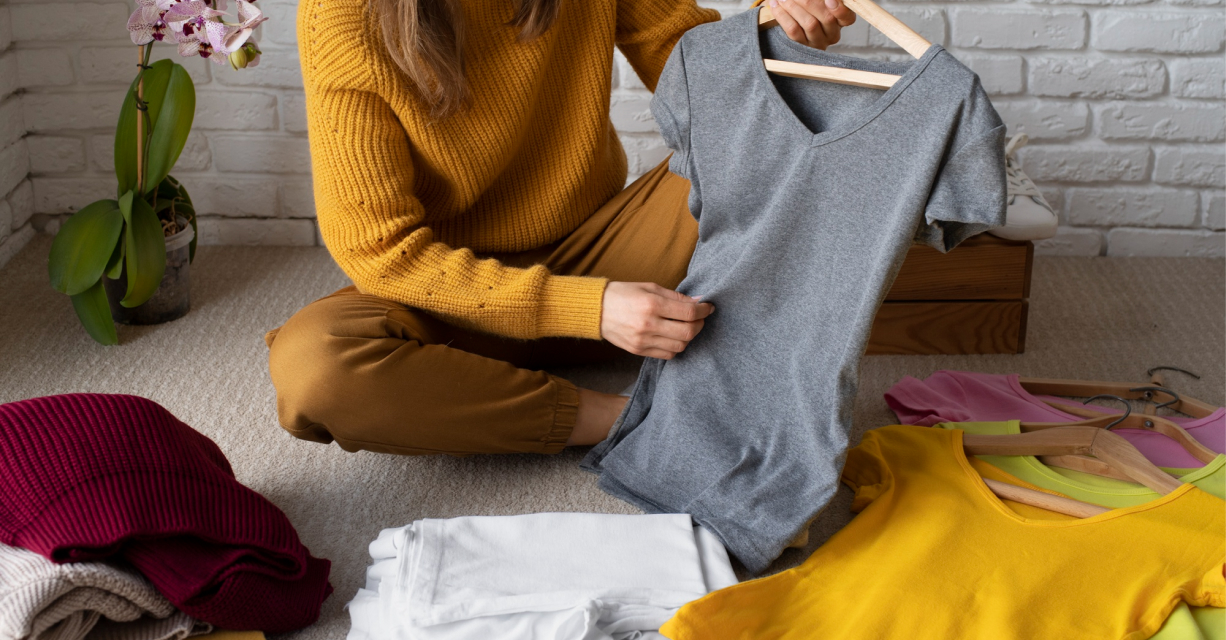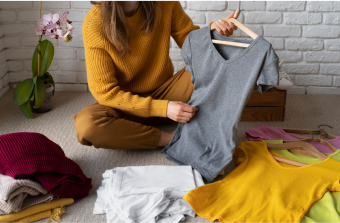

Sustainable fashion is no longer a niche interest; it has become a mainstream movement that reflects growing awareness about environmental issues and ethical concerns in the fashion industry. Building an eco-friendly wardrobe is not just a trend but a responsible lifestyle choice that contributes to a healthier planet. As an experienced author with 15 years in the fashion industry, I aim to guide you through the essential steps to creating a sustainable wardrobe that balances style with responsibility.
Before diving into the practical steps, it’s crucial to understand what sustainable fashion entails. Sustainable fashion focuses on reducing the environmental impact of clothing production and consumption. This involves:
The first step in building a sustainable wardrobe is to assess what you already own. This involves:
Start by decluttering your wardrobe. Sort your clothes into three categories: keep, donate, and recycle. Be honest about what you wear and what you don’t. Donate gently used items to local charities or thrift stores and recycle worn-out clothes through textile recycling programs.
Once you have decluttered, identify any gaps in your wardrobe. Make a list of essential pieces that you need. This helps you focus on buying only what is necessary, reducing impulse purchases and waste.
When shopping for new clothes, prioritize sustainable materials. Here are some eco-friendly options to consider:
Organic cotton is grown without harmful pesticides and synthetic fertilizers. It uses less water and supports healthier soil. Look for certifications like GOTS (Global Organic Textile Standard) to ensure authenticity.
Clothing made from recycled materials, such as recycled polyester or nylon, reduces waste and the demand for new raw materials. Brands like Patagonia and Girlfriend Collective offer stylish options made from recycled fabrics.
Biodegradable fabrics like Tencel (lyocell) and hemp break down more easily in the environment compared to synthetic fabrics. Tencel is made from sustainably sourced wood pulp and is known for its softness and breathability.
Supporting brands that prioritize sustainability and ethical practices is crucial. Do your research and choose companies that are transparent about their production processes. Some reputable sustainable brands include:
Patagonia is a pioneer in sustainable fashion, known for its commitment to environmental activism, fair labor practices, and use of recycled materials.
Eileen Fisher focuses on simplicity, timeless design, and sustainable practices. The brand offers a take-back program to recycle and reuse old garments.
Everlane is dedicated to transparency, providing detailed information about its factories and cost breakdowns for its products. The brand offers a range of sustainable and ethical clothing options.
Changing the way you shop can significantly impact your wardrobe’s sustainability. Here are some tips:
Invest in high-quality, timeless pieces that you can wear for years. Quality over quantity should be your guiding principle.
Thrift stores, consignment shops, and online platforms like Poshmark and ThredUp offer a wide selection of pre-owned clothing. Buying second-hand reduces demand for new clothing and gives garments a second life.
Consider renting outfits for special occasions instead of buying new ones. Services like Rent the Runway offer a variety of options. Clothing swaps with friends or community groups are also a fun and eco-friendly way to refresh your wardrobe.
Proper care extends the life of your clothes, reducing the need for frequent replacements. Here are some tips:
Washing clothes less frequently and opting for cold water cycles can prolong their lifespan and save energy. Air drying instead of using a dryer also reduces wear and tear.
Learn basic sewing skills to repair minor damages like loose buttons or small tears. Upcycling old clothes into new items or accessories is a creative way to reduce waste.
Store your clothes in a cool, dry place away from direct sunlight to prevent fading and deterioration. Use padded hangers for delicate items and fold heavy knitwear to maintain their shape.
Building an eco-friendly wardrobe is a commendable personal achievement, but sharing your journey can inspire others to follow suit. Here’s how you can spread the word:
Use your social media platforms to share tips, brands, and your sustainable fashion journey. Hashtags like #SustainableFashion and #EcoFriendlyWardrobe can help you connect with a broader community.
If you’re passionate about sustainable fashion, consider starting a blog to share your insights, experiences, and tips. Blogging can reach a dedicated audience interested in making more responsible fashion choices.
Participate in or organize local events like clothing swaps, workshops, or talks on sustainable fashion. Community involvement can amplify your impact and encourage collective action.
Building a sustainable wardrobe is a journey that requires mindful choices and a commitment to responsible consumption. By assessing your current wardrobe, choosing eco-friendly materials, supporting ethical brands, adopting sustainable shopping habits, caring for your clothes, and spreading the word, you can make a significant impact on the environment and contribute to a more ethical fashion industry.
Remember, every small step counts. Sustainable fashion is not about perfection but about making better choices that collectively lead to a positive change. Embrace the journey, and enjoy the process of creating a wardrobe that reflects not only your personal style but also your values and commitment to a healthier planet.